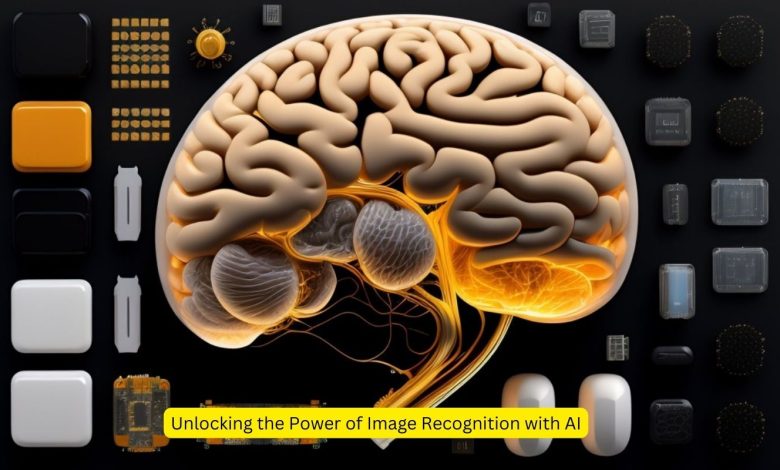
In an era dominated by digital imagery. the ability to interpret and understand images is paramount. From social media platforms to medical diagnostics, the demand for efficient. and accurate image recognition technology has surged. This demand met by the intersection of artificial intelligence (AI) and image recognition. a marriage that has revolutionized how we interact with visual data.
The Basics of Image Recognition with AI
At its core, image recognition with AI involves teaching machines to interpret and understand visual data. Traditional methods of image recognition relied on handcrafted features and algorithms. often struggling with complex images or variations in lighting and perspective. Enter AI-powered image recognition. which leverages deep learning algorithms to learn features. and patterns from vast amounts of labeled data.
Deep Learning: The Backbone of AI Image Recognition
Deep learning, a subset of machine learning. has emerged as the cornerstone of AI-driven image recognition. Neural networks, inspired by the structure of the human brain. are trained on large datasets to recognize patterns and features within images. Convolutional Neural Networks (CNNs), in particular, have proven to be effective in tasks. such as object detection, image classification, and facial recognition.
Training the Algorithm: The Role of Data
The success of AI image recognition hinges on the quality and quantity of data used for training. Large, diverse datasets allow algorithms to learn from a wide range of visual patterns. enhancing their ability to generalize and recognize new images . Data augmentation techniques, such as rotation, scaling. and flipping, further enrich the training data. making the algorithm robust to variations in input images.
Applications Across Industries
The impact of AI image recognition transcends various industries. driving innovation and efficiency across the board:
1. Healthcare:
In medical imaging, AI-powered recognition systems assist radiologists in diagnosing diseases such as cancer, tumors. and fractures with higher accuracy and speed. These systems analyze X-rays, MRIs, and CT scans. helping clinicians make informed decisions and improve patient outcomes.
2. Retail:
Image recognition technology enables retailers. to enhance customer experiences through personalized recommendations, visual search, and inventory management. By analyzing images of products, AI algorithms can identify similar items, detect trends. and optimize shelf layouts, leading to increased sales and customer satisfaction.
3. Automotive:
In the automotive industry, AI-driven image recognition plays a crucial role in advanced driver help systems (ADAS) and autonomous vehicles. Cameras and sensors detect lane markings, traffic signs, pedestrians. and other vehicles, enabling vehicles to navigate and on roads.
4. Security and Surveillance:
Surveillance systems powered by AI image recognition offer enhanced security capabilities. identifying suspicious activities, detecting intruders, and monitoring crowds in real-time. These systems provide valuable insights to law enforcement agencies. helping them prevent crimes and maintain public safety.
5. Agriculture:
In agriculture, AI image recognition aids in crop monitoring. pest detection, and yield estimation. Drones equipped with cameras capture aerial imagery of farmland. allowing farmers to identify areas requiring attention, optimize irrigation. and maximize crop yields while minimizing resource usage.
Challenges and Ethical Considerations
Despite its remarkable capabilities, AI image recognition faces several challenges and ethical considerations:
1. Bias and Fairness:
AI algorithms can inherit biases present in the training data. leading to unfair or discriminatory outcomes, particularly in areas. such as facial recognition and criminal justice. Addressing bias and ensuring fairness in AI systems must careful data curation. algorithmic transparency, and ongoing evaluation.
2. Privacy Concerns:
The widespread deployment of AI image recognition raises concerns about privacy infringement and surveillance. Striking a balance between security and individual privacy is essential. necessitating robust data protection measures. and transparent policies governing the collection and use of visual data.
3. Algorithmic Robustness:
AI image recognition systems are susceptible to adversarial attacks. where minor perturbations to input images can cause misclassification. Enhancing the robustness of algorithms against such attacks requires rigorous testing. adversarial training, and the development of defense mechanisms.
The Future of AI Image Recognition
As AI continues to evolve, so too will the field of image recognition. Advancements in deep learning architectures. such as attention mechanisms and transformer networks, promise even greater accuracy. and efficiency in visual understanding. Additionally, interdisciplinary research efforts, combining AI with fields like neuroscience and cognitive science. hold the potential to unlock new paradigms in image recognition and human-computer interaction.
Conclusion
In the digital age, the ability to interpret. and understand visual data is indispensable across various domains. AI-powered image recognition stands at the forefront of this revolution. offering unprecedented capabilities in analyzing and extracting insights from images. With continued research, innovation. and ethical considerations, AI image recognition will continue to reshape industries, empower businesses. and enrich human experiences in the years to come.